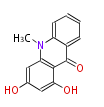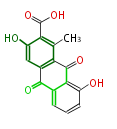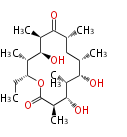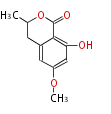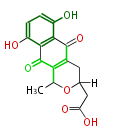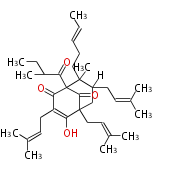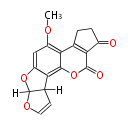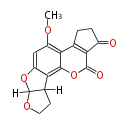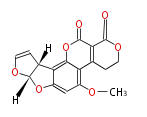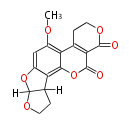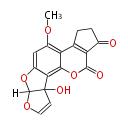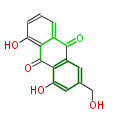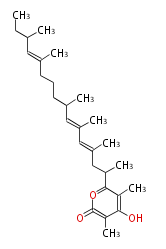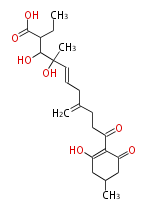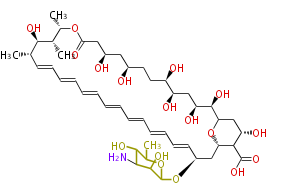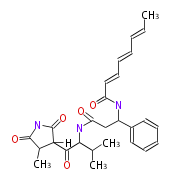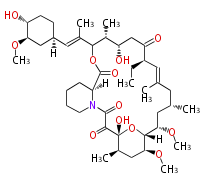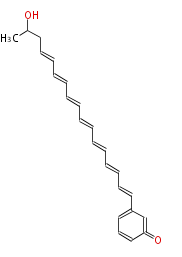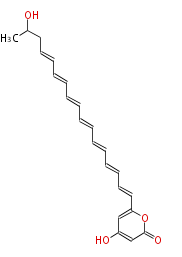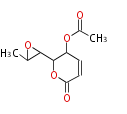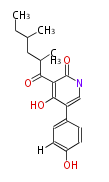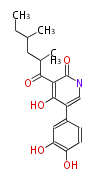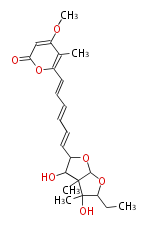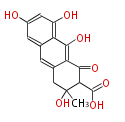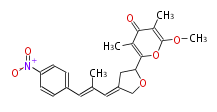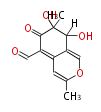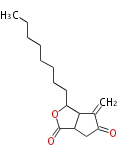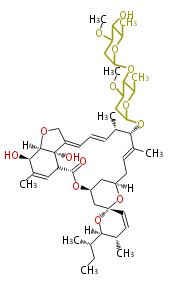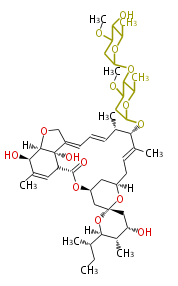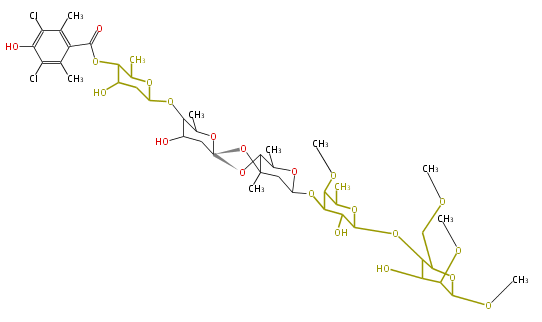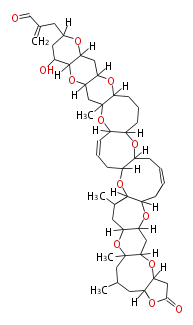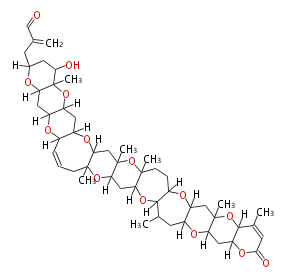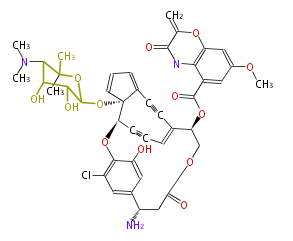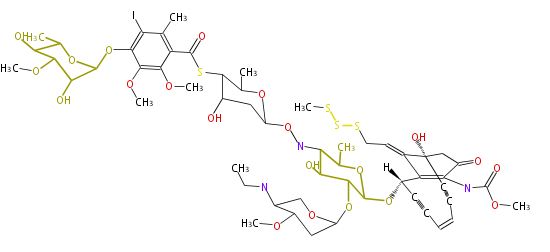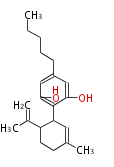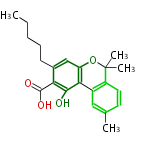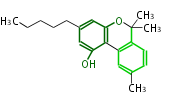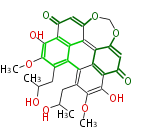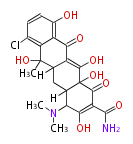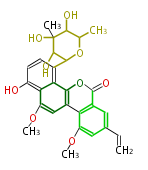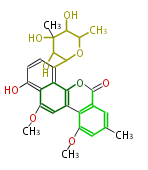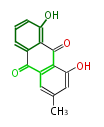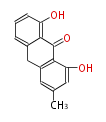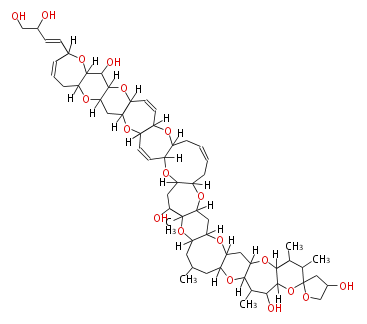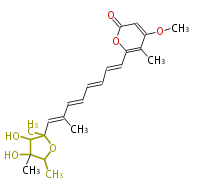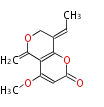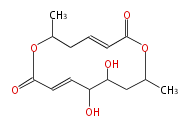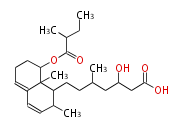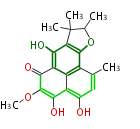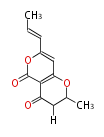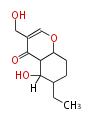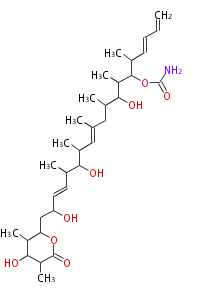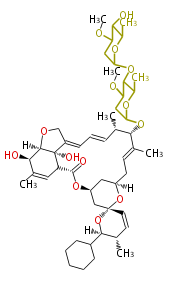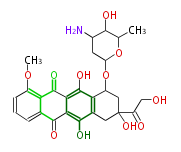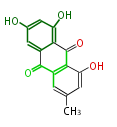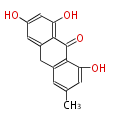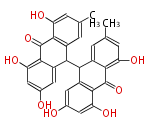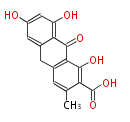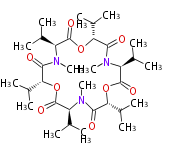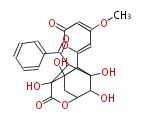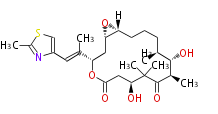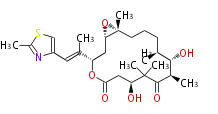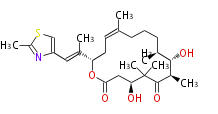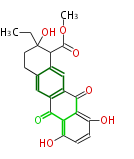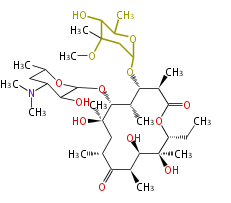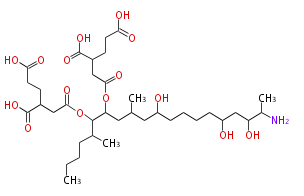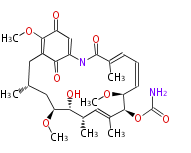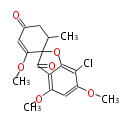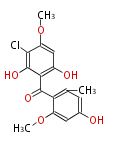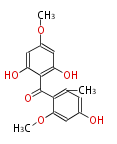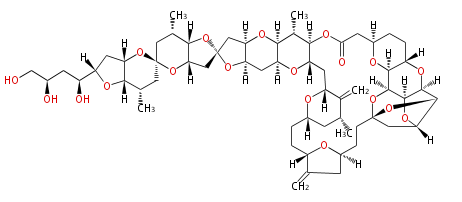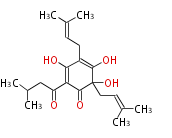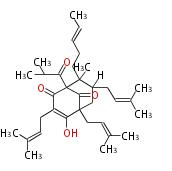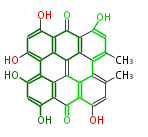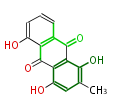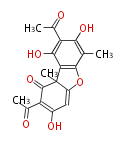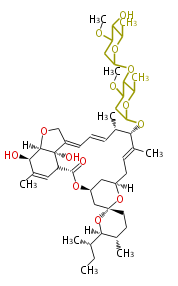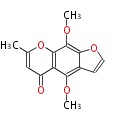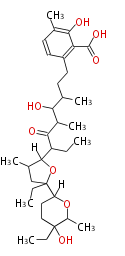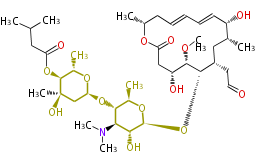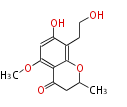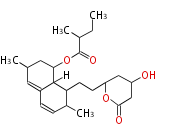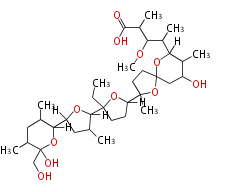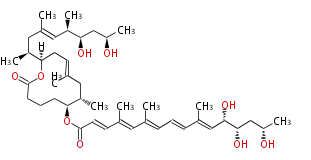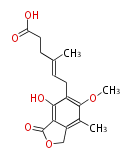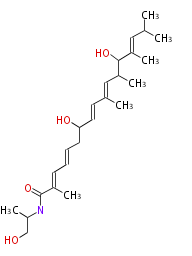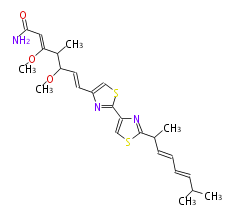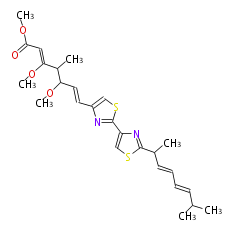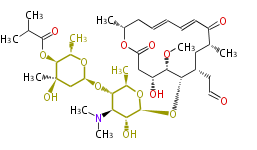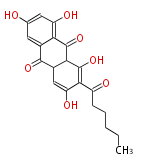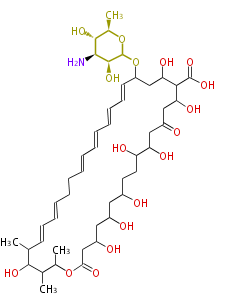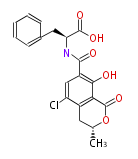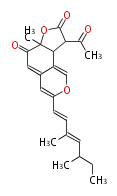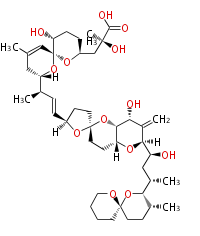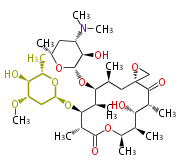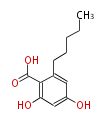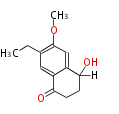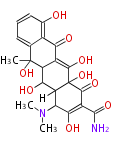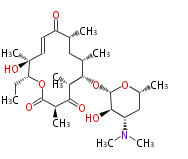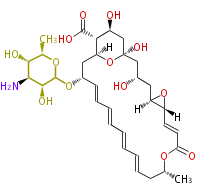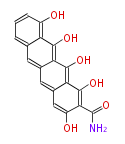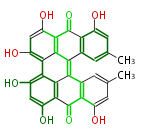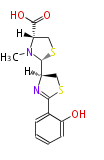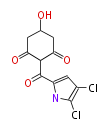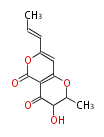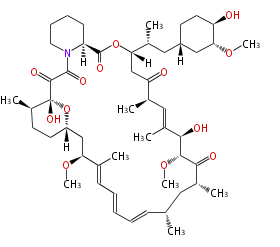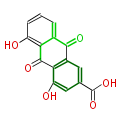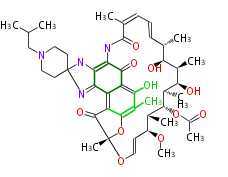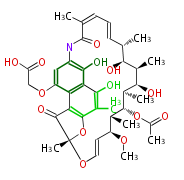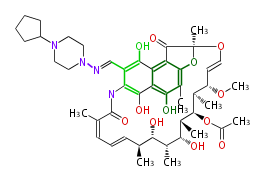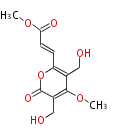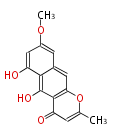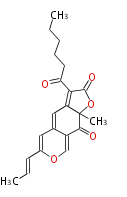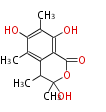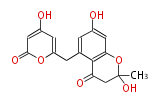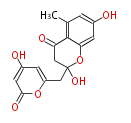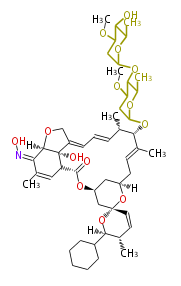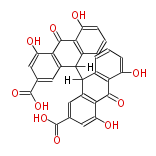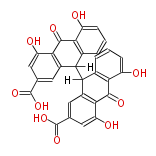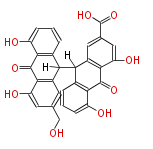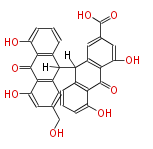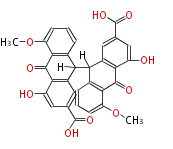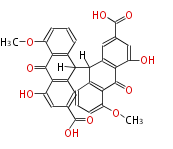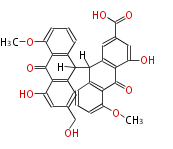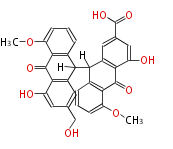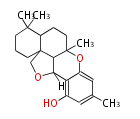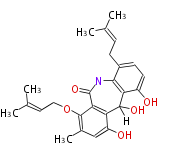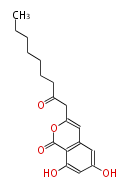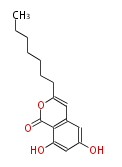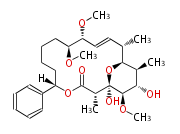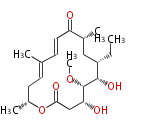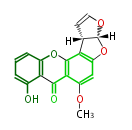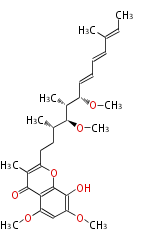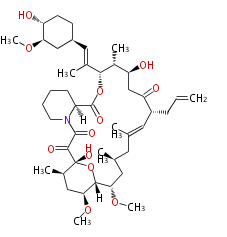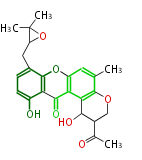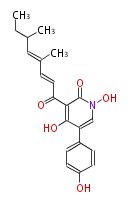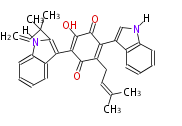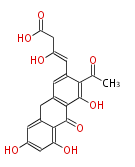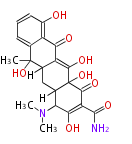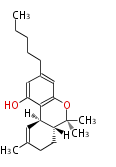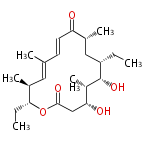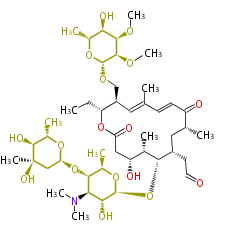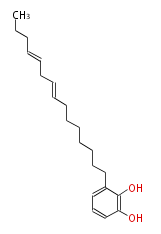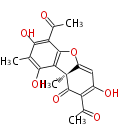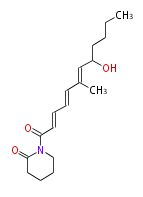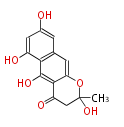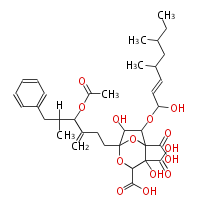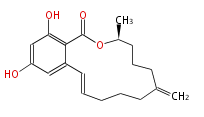Category:PK
m (→{{Bilingual|構造|Structure}}) |
m (→Polyketide Synthase (PKS)) |
||
| Line 258: | Line 258: | ||
----> | ----> | ||
| − | + | =Polyketide Synthase (PKS)= | |
| − | + | ||
| + | =={{Bilingual|分布|Distribution}}== | ||
{{Twocolumn| | {{Twocolumn| | ||
PKS members are found in bacteria, fungi, plants, slime mold<ref>Zucko J, Skunca N, Curk T, Zupan B, Long PF et al (2007) "Polyketide synthase genes and the natural products potential of Dictyostelium discoideum" ''Bioinformatics'' 23:2543-49</ref>, Alveolata<ref>Zhu G, LaGier MJ, Stejskal F, Millership JJ, Cai X et al (2002) "Cryptosporidium parvum: the first protist known to encode a putative polyketide synthase" ''Gene'' 298:79-89</ref>, and animals <ref>Castoe TA, Stephens T, Noonan BP, Calestani C (2007) "A novel group of type I polyketide synthases (PKS) in animals and the complex phylogenomics of PKSs" ''Gene'' 392:47-58</ref><ref>Calestani C, Rast JP, Davidson EH (2003) "Isolation of pigment cell specific genes in the sea urchin embryo by differential macroarray screening" ''Development'' 130:4587-96</ref>. | PKS members are found in bacteria, fungi, plants, slime mold<ref>Zucko J, Skunca N, Curk T, Zupan B, Long PF et al (2007) "Polyketide synthase genes and the natural products potential of Dictyostelium discoideum" ''Bioinformatics'' 23:2543-49</ref>, Alveolata<ref>Zhu G, LaGier MJ, Stejskal F, Millership JJ, Cai X et al (2002) "Cryptosporidium parvum: the first protist known to encode a putative polyketide synthase" ''Gene'' 298:79-89</ref>, and animals <ref>Castoe TA, Stephens T, Noonan BP, Calestani C (2007) "A novel group of type I polyketide synthases (PKS) in animals and the complex phylogenomics of PKSs" ''Gene'' 392:47-58</ref><ref>Calestani C, Rast JP, Davidson EH (2003) "Isolation of pigment cell specific genes in the sea urchin embryo by differential macroarray screening" ''Development'' 130:4587-96</ref>. | ||
| Line 289: | Line 290: | ||
<references/> | <references/> | ||
| − | + | =={{Bilingual|タイプ|Type}}== | |
| − | + | ||
| − | + | ||
| − | + | ||
| − | === | + | ===Type I and Type II PKS=== |
| + | |||
| + | {|class="wikitable" | ||
| + | ! Type I | ||
| + | ! Type II | ||
| + | |- | ||
| + | | | ||
{{Twocolumn| | {{Twocolumn| | ||
| − | Multiple domains per protein (e.g. Erythromycin biosynthesis <ref> (2001) ''Nat Prod Rep'' 18:380</ref>) | + | Multiple domains per protein (e.g. Erythromycin biosynthesis <ref> (2001) ''Nat Prod Rep'' 18:380</ref>). The gene cluster spans at least 60 kb and synthesize macrolides and aromatic structures. |
* Bacterial type I is '''modular''', i.e., each domain (or module) catalyses a specific transformation. | * Bacterial type I is '''modular''', i.e., each domain (or module) catalyses a specific transformation. | ||
| − | * | + | * Fungal type I is '''iterative''', i.e., same domains are used multiple times to create large structures. |
| − | + | ||
| − | + | ||
| − | + | ||
| | | | ||
| − | 複数ドメインを持つタンパク質 | + | 複数ドメインを持つタンパク質 (例.エリスロマイシン合成酵素)。 少なくとも 60 kb 以上の大きなクラスターを形成し芳香環やマクロライドのような環状化合物を作る。構造の修飾はやや限定的。 |
* バクテリアのタイプ I は、モジュール型 | * バクテリアのタイプ I は、モジュール型 | ||
* 菌類のタイプ I は反復型 | * 菌類のタイプ I は反復型 | ||
| − | |||
| − | |||
}} | }} | ||
| − | + | | | |
| − | + | ||
| − | + | ||
| − | + | ||
| − | + | ||
| − | + | ||
| − | + | ||
| − | + | ||
{{Twocolumn| | {{Twocolumn| | ||
single domain per protein | single domain per protein | ||
| Line 327: | Line 319: | ||
}} | }} | ||
| − | + | |} | |
| + | |||
| + | ==={{Bilingual|タイプ III|Type III}}=== | ||
{{Twocolumn| | {{Twocolumn| | ||
Chalcone synthase-like in plants | Chalcone synthase-like in plants | ||
| Line 336: | Line 330: | ||
}} | }} | ||
| − | + | ==={{Bilingual|その他|Others}}=== | |
{{Twocolumn| | {{Twocolumn| | ||
;Bacterial but iterative type I PKS for aromatic polyketide | ;Bacterial but iterative type I PKS for aromatic polyketide | ||
Latest revision as of 12:24, 18 December 2012
| ポリケチド トップ | 生物種 | UniRef90クラス | UniRef50クラス | 遺伝子クラス | ドメイン一覧 (by CDD) |
ドメイン一覧 (by MAPSI) |
ポリケチド
|
[edit] 概要
[edit] 構造
|
Polyketides are natural products with multiple ketone structures and synthesized from acetyl CoA. The synthetic pathway is called Acetate-Malonate Pathway. Well known products include erythromycin (antibiotic), melanin (pigment), and aflatoxin (toxin). |
ポリケチドはケトン構造を複数持つ天然物のカテゴリーで、アセチルCoAから作られます。その生合成ステップは、酢酸-マロン酸経路と呼ばれています。代表例は抗生物質のエリスロマイシン、色素のメラニン、毒素のアフラトキシンです。 |
[edit] 酢酸-マロン酸経路
|
Acetyl CoA from glycolysis and its carboxylated form (malonyl CoA) are polymerized to form polyketone as in the fatty acid synthesis without reduction of carbonyl groups. Methylene moieties between ketones are highly reactive and easily Aldol- or Claisen-condensed to generate aromatic rings. |
解糖系から生じるアセチル CoA と、それを炭酸化して生じるマロニル CoA が、カルボニル基の還元をうけないまま脂肪酸合成と同様に伸張してポリケトンを作ります。 ポリケトンの間に挟まれるメチレンは反応性が高く、容易に分子内のアルドルまたはクライゼン縮合を起こして芳香環を形成します。 |
[edit] 伸張機構
|
Polyketides are synthesized through the polymerization of acetyl units (β-ketomethylene) as in fatty acid biosynthesis. Typical starter units are short-chain fatty acids (e.g. acetyl-CoA or propionyl-CoA), on to which extender units (e.g. malonyl-CoA or methylmalonyl-CoA) are repeatedly polymerized. The key reactions for the chain extension are:
|
ポリケチドは脂肪酸の合成に同じく、アセチル単位 (β-ケトメチレン鎖) の重合によって作られます。よく使われる初期ユニットはアセチルCoAやプロピオニルCoAで、それらをマロニルCoAやメチルマロニルCoAで伸張していきます。 鎖の伸長に使う反応は
|
|
After elongation, β-ketone is reduced. In fatty acid biosynthesis, the chain is fully reduced by the following three steps:
|
伸張の後に、ケト基を還元します。完全に還元して酸素を除くと脂肪酸になりますが、ポリケチドの多くは還元が部分的にストップします。重要な反応は
|
|
Finally, the chain is terminated by a thioesterase (TE) activity and allows Claisen cyclization (CYC). |
最後に、チオエステル分解酵素 (TE) によって伸張が止まり、ラクトン化 (閉環) します。 |
[edit] Polyketide Synthase (PKS)
[edit] 分布
|
PKS members are found in bacteria, fungi, plants, slime mold[1], Alveolata[2], and animals [3][4]. |
ポリケチド合成酵素は、バクテリア、菌類、植物、変形菌、アルベオラータ(せん毛虫や渦鞭毛虫を含む原生動物)、動物に見出されています。 |
| Species | Actinomycetes | Cyanobacteria | γ-Proteobacteria | Fungi | Alveolata |
|---|---|---|---|---|---|
| Type-I PKS | Ο | Ο | Ο | Ο | Ο |
| Type-II PKS | Ο | Χ | Χ | Χ | Χ |
| NRPS | Ο | Ο | Ο | Ο | Χ |
| deoxysugar | Ο | Χ | Χ | Χ | Χ |
| Terpene | Δ | Χ | Χ | Ο | Χ |
- References
- ↑ Zucko J, Skunca N, Curk T, Zupan B, Long PF et al (2007) "Polyketide synthase genes and the natural products potential of Dictyostelium discoideum" Bioinformatics 23:2543-49
- ↑ Zhu G, LaGier MJ, Stejskal F, Millership JJ, Cai X et al (2002) "Cryptosporidium parvum: the first protist known to encode a putative polyketide synthase" Gene 298:79-89
- ↑ Castoe TA, Stephens T, Noonan BP, Calestani C (2007) "A novel group of type I polyketide synthases (PKS) in animals and the complex phylogenomics of PKSs" Gene 392:47-58
- ↑ Calestani C, Rast JP, Davidson EH (2003) "Isolation of pigment cell specific genes in the sea urchin embryo by differential macroarray screening" Development 130:4587-96
[edit] タイプ
[edit] Type I and Type II PKS
| Type I | Type II | ||||
|---|---|---|---|---|---|
|
|
[edit] タイプ III
|
Chalcone synthase-like in plants
|
カルコン合成酵素型 (植物)
|
[edit] その他
|
|
|
- AviM for orsellinic acid biosynthesis (Streptomyces viridochromogens Tu57)[3]
- CalO5 for calicheamicin biosyntehsis (Micromonospora echinospora ssp. calichenisis)[4]
- NesB for neocarzinostatin biosynthesis (?)[5]
|
|
|
- lnmIJ for leinamycin biosynthesis (Streptomyces atroolivaceus S-140)[6]
- PedF for pederin biosynthesis (symbiont bacterium of Paederus beetles)[7]
|
|
|
- NonPQU and NonJK (Streptomyces griseus)[8]
[edit] Unusual structures
| Phoma | zaragozic acid, phomoidoride | Streptomyces | yatakemycin, leinamycin, saframycin, neocarzinostatin, staurosporin, FR182877 | Other bacteria | PKS-NRPS hybrid type
Curacin A (Lyngbya), Shiphonazole (Herpetosiphon), Jamaicamide A (Lyngbya), Cylindrospermopsin (Cylindrospermopsis) |
|---|
[edit] Non-ribosomal peptide synthase (NRPS)
Coupling with PKS and NRPS
- vancomycin ()
- leinamycin (Curr opin chem biol 7:285, 2003)
- pseurotin (chem bio chem 8:1736-1743, 2007)
- curacin (curr opin chem biol 13:216, 2009)
- epothilone
- rapamycin
[edit] Decoration
deoxysugars
deoxygenation, c-methylation, amination, n-methylation, ketosugar,
- References
- ↑ (2001) Nat Prod Rep 18:380
- ↑ Moore BS, Hopke JN (2001) Discovery of a new bacterial polyketide biosynthetic pathway Chembiochem 2:35-8
- ↑ Gaisser S, Trefzer A, Stockert S, Kirschning A, Bechthold A (1997) Cloning of an avilamycin biosynthetic gene cluster from Streptomyces viridochromogenes Tu57. J Bacteriol 179:6271-8
- ↑ Whitwam RE, Ahlert J, Holman TR, Ruppen M, Thorson JS (2000) The gene calC encodes for a non-heme iron metalloprotein responsible for calicheamicin self-resistance in Micromonospora. J Am Chem Soc 122:1556-7
- ↑ Zazopoulos E, Huang K, Staffa A, Liu W, Bachmann BO, Nonaka K, Ahlert J, Thorson JS, Shen B, Farnet CM (2003) A genomics-guided approach for discovering and expressing cryptic metabolicpathways Nat Biotechnol epub.
- ↑ Cheng Y-Q, Tang G-L, Shen B (2003) Type I polyketide synthase requiring a discrete acyltransferase for polyketide biosynthesis Proc Natl Acad Sci U S A 100: in press
- ↑ Piel J (2002) A polyketide synthase-peptide synthetase gene cluster from an uncultured bacterial symbiont of Paederus beetles Proc Natl Acad Sci U S A 98:14808-13
- ↑ Kwon HJ, Smith WC, Scharon AJ, Hwang SH, Kurth MJ, Shen B (2002) C-O bond formation by polyketide synthases Science 297(5585):1327-30

